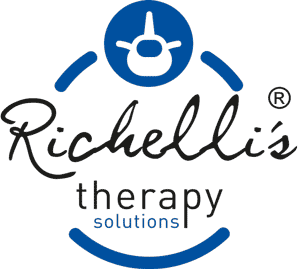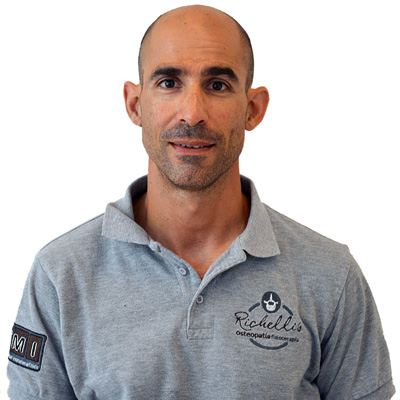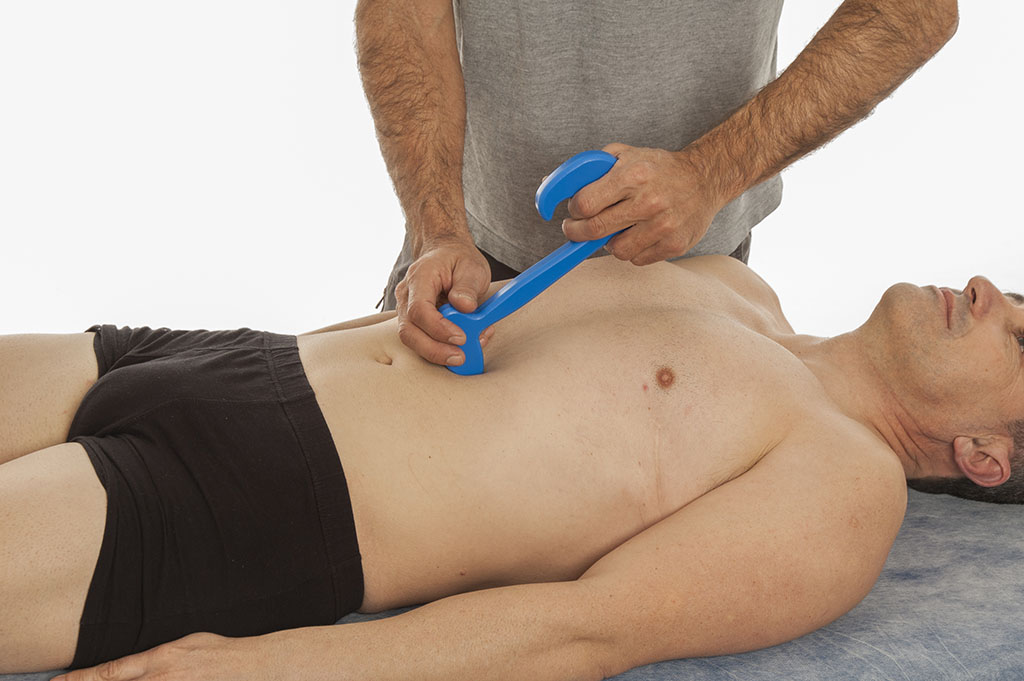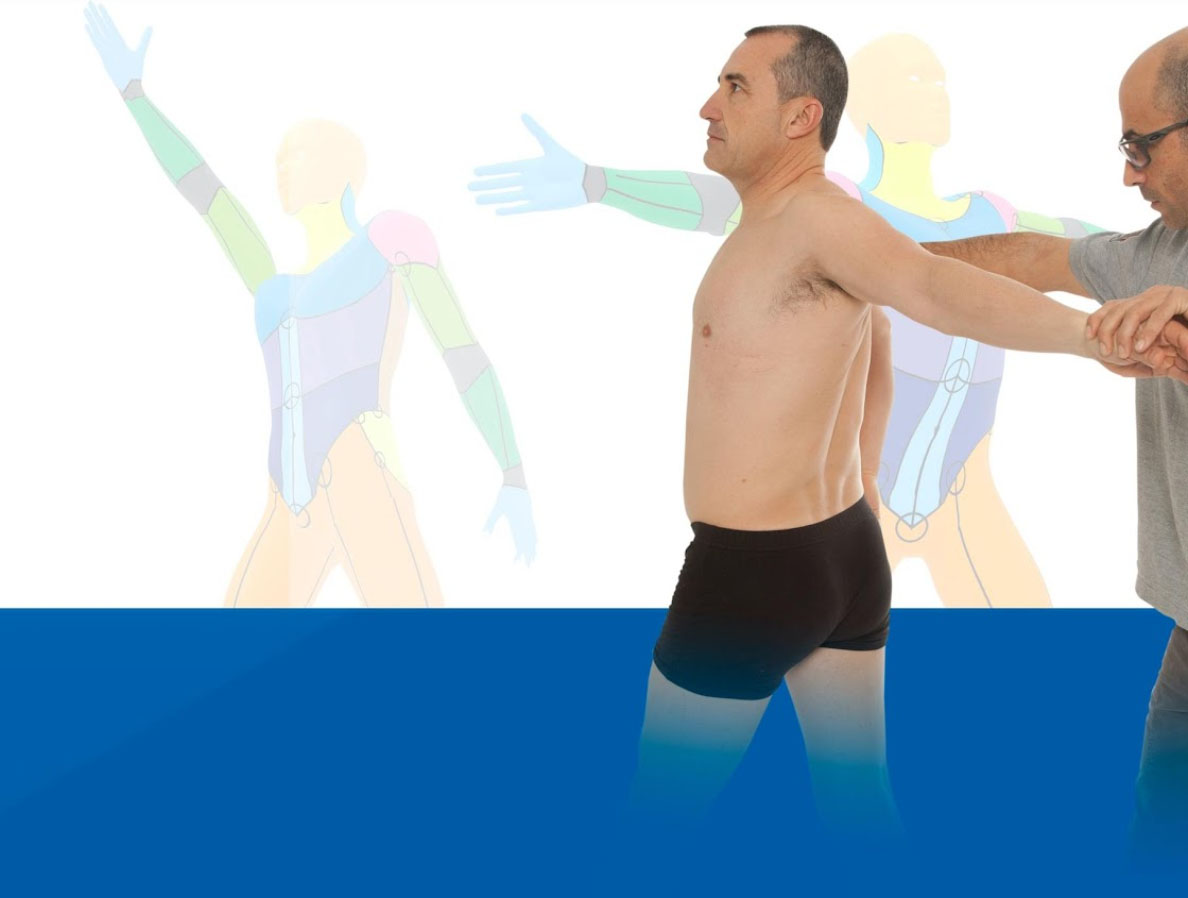
Richelli's Fascial Quadrant System
Course in Denmark
Be one of the first to learn the Richelli’s method from Stefan Richelli himself.
Learn to diagnose with his method and learn how to use his manual therapy tools.
Price: 4995 Dkr
(Lunch, coffe/te/fruit included)
27, 28 & 29 APRIL 2023
20 hours course


Stefan Richelli
Physiotherapist & osteopath

There must be a good diagnosis to achieve effective treatment. What is a good diagnosis and what tissues should we explore?
Until now, the musculoskeletal system and its innervation were explored in alterations of the musculoskeletal system. The alterations presented by the lesion, muscles involved and their innervation were determined. With this information the treatment was considered.
But there is a system that encompasses everything in the body, intercommunicates it and determines its proper functioning. This system is the fascial system. If the fascial system governs the entire body, and therefore also the musculoskeletal system, we must use the fascial system to determine the alterations it causes to other systems and not seek the cause and solution in subordinate systems.
This exploration method is based on a new concept of FASCIAL QUADRANTS that are formed by the lines of greatest fascial adherence described in the most recent fascial anatomy atlases. These quadrants make up an imaginary suit for the body. This it’s much better understood how the tensions in the body are compensated and how they can alter its correct movement.
The patient will describe and point out their limitations during the movement of the dynamic tests. This makes the tests replicable and they are not dependent therapists, ensuring the results through re-testing, after each individual intervention.
Making errors of interpretation, measurement and not knowing how other parts of the body are involved in an injury, surely leads to poor or counterproductive results.
This face-to-face course teaches how to see the patient in a global way through the FASCIAL QUADRANTS to evaluate and re-evaluate the state of the dysfunction that triggered an injury. With minimal intervention at the key point, you will be able to act on the alterations that trigger the pathology before treating its symptoms. You wont be able to make mistakes since the method is constantly self-validating, making Richelli’s Fascial Quadrant System one of the safest and most reliable.
The injury is the consequence of some factors that cause it. Triggers must be treated before the injury is treated.

OBJECTIVES
General objectives
- To know how to evaluate the patient globally and determine the points that cause their injury to determine the order and need for treatment.
- To know what the fascial quadrants are and how they interrelate.
- To know why the fascial system governs the rest of the systems and therefore know its importance in all types of treatments.
- Provide students with the knowledge, attitudes and skills for the correct application of Richelli’s Pain Reliever and 3D Thumb as a support for manual therapy in clinical care practice.
Specific objectives
- To know the fascial system and its functioning through a new vision of the fascial quadrants.
- To know the mechanisms of action to act on the fascial system.
- To know the treatment parameters on the fascial system.
- How to use two new tools, Richelli’s Spinemover and Dino.
- How to explore the fascial system using the FASCIAL QUADRANTS.
- How to interpret the results of the fascial exploration of the FASCIAL QUADRANTS.
- How to carry out a treatment plan and how to validate it through continuous re-examination.
- To know Richelli’s Pain Reliever and 3D Thumb’ properties and possibilities.
- Execute the different application techniques of Richelli’s Pain Reliever.
- Execute the different application techniques of Richelli’s 3D Thumb.
- Make a correct use of the techniques in relation to the objectives of the treatment, anatomical structures involved and mechanisms of action involved.
- Integrate the different manual therapy techniques with the combined application of Richelli’s Pain Reliever and 3D Thumb in a treatment sequence, developing new treatment proposals.
Who can attend the course?
Healthcare Professionals
Doctors, Physiotherapists, Kinesiologists, Occupational Therapists, Bachelor of Physical Therapy, Bachelor of Physiotherapy, Associate Professional in Physiotherapy, Professional Technician in Physical Therapy, Chiropractors and students of the last semesters of said careers
DURATION
20 hours spread over three days. (20% theory and 80% practice)
PROGRAMME
- TMI mechanisms of action.
- The effects of TMI therapy.
- Introduction. Let’s unify concepts.
- Function and structure of connective tissue.
- Simplified composition of the fascial system.
- Function and structure of connective tissue.
- Pathophysiology of connective tissue.
- The skin and its importance within the fascial system.
- The fascial quadrants.
- Cutaneous tension lines and their implication in proprioception.
- In which direction does the skin moves during movement?
- Asymmetry of tension in the fascial system.
- Fundamentals of exploration.
- Instrumentalized Manual Therapy’s mechanisms.
- Instrumentalized Manual Therapy’s effects.
- Myofascial alterations.
- Tools.
- Assessment.
- Test interpretation.
- Treatment approach.
TEACHING METHODS AND MATERIAL
– Laptop, projector and screen.
– Color dossier.
– The practical contents will be taught in a Power Point presentation, in addition to a practical demonstration by the teacher.
– Students will practice each of the techniques in groups of two, supervised by the teacher.
– A stretcher for every two students.
– The theoretical contents will be taught through a lecture supported by a PowerPoint presentation.
OBSERVATIONS
Students must wear comfortable clothing, including comfortable underwear or swimwear, to practice the techniques in the different body regions.
WHERE TO BE
Hotel Marina, https://www.hotelmarina.dk,
Vedbæk strandvej 391, 2950 Vedbæk.
(8 Minute walk from Vedbæk train station/Regional train/“kystbanen»)
TIMELINE
27th April …… 9.00 – 16.30 h.
28th April …… 9.00 – 16.30 h.
29th April …… 9.00 – 15.30 h.
Vedbæk stationsvej 21B, 1.tv, 2950 Vedbæk – DK
Tlf. + 4560641403
Telefontid tirsdag 8-10.
www.elinsolheim.dk – www.elinsolheim.se – www.fysioflow.dk
Tlf. + 34 963722245
www.richellistherapysolutions.es